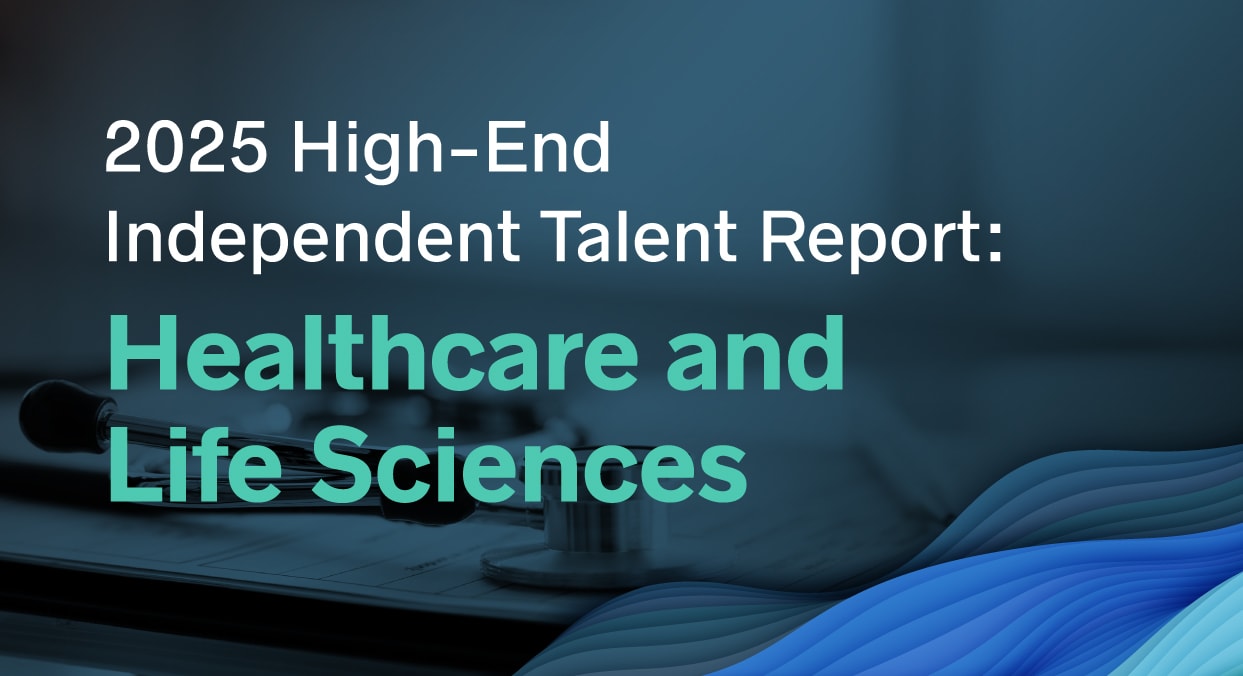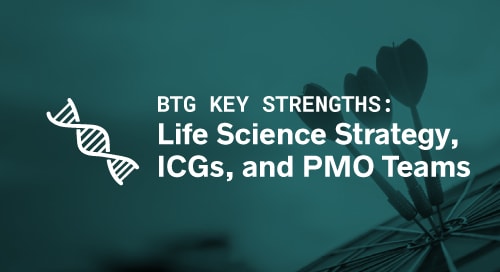As a sector, pharma doesn’t give itself enough credit for being innovative. It is one of only a handful of industries that have had a dramatic influence and impact on society and human life in recent decades – and it needs to recognise both its power and its responsibility.
This was the argument of one panellist at Reuters Pharma 2024 in Barcelona, where the overarching motif was the changing role of pharma within the healthcare sector, dictated by increasing demand, innovation, regulatory change, and economic constraints. In April, our team from Business Talent Group, a Heidrick & Struggles company, joined 1,200 delegates from across the sector at the event to discuss the industry’s most pressing issues.
Understandably, the core focus of the event was on patient outcomes, and how innovations in technology can be employed to improve them. Patient engagement, the development of new technologies, and the unification of fragmented healthcare systems were common themes across many of the sessions, as leaders in commercial, digital health, communications, and medical affairs came together to share best practices and possible solutions.
Effectively employing digital and AI
It was remarkable, but perhaps not surprising, that nearly all of the sessions, no matter which conference track they followed, touched on AI in some way. As one panellist noted, artificial intelligence has become impossible to ignore, saying: “With AI, we’re now in a revolution similar to the internet and the cloud.”
The sessions that specifically addressed digital and analytics focused on utilising these technologies to significantly improve the patient experience. One speaker suggested that, by combining the power of AI with scientific expertise, pharma companies should be able to find answers to some of the most pressing questions in healthcare: accelerating breakthroughs in understanding and treating diseases; discovering and developing therapies; equipping healthcare providers with better insights; and personalising care for patients.
Another attendee pointed out that pharma has access to the “Rolls-Royce” of tech stacks. Now, they added, the sector needs to start making this technology work harder. Generative AI, for example, is offering an unprecedented breadth of opportunities. It can be used to create integration right across the entire patient experience journey – enhancing response times and allowing high levels of customisation for specific populations and individuals.
AI’s capabilities include providing health care professionals with more targeted access to information, allowing them to make better treatment suggestions. One speaker also noted that there has been a general return from a state of “digital remoteness” in new tech solutions. They asserted that most successful launches since COVID have involved more interpersonal interactions in addition to their digital elements.
The power of patient data
Another strong theme at the event was the transformative power of patient-reported data. “Pharma companies are really data management businesses,” stated one speaker. “We rarely touch the product – the drug – but we do touch a lot of real-world data.”
This discussion centred on one key insight: that embracing a data-driven approach will prove fundamental in improving global healthcare outcomes. Moving forward, it will therefore be crucial to support healthcare policies that enhance data integration. Data needs to be less fragmented – but equally important are data accessibility and connectivity, making data fair, and the consistency of data – particularly real-world data.
Ensuring a homogenous approach to data management will require greater synergy of multidisciplinary teams, bringing together data scientists, clinicians, and ethicists, each contributing unique insights. And ultimately, attendees were told, the sector needs to be able to move from data theory to practice – because the future lies in reviewing patient outcomes in real time.
Putting engagement at the forefront
Key questions asked at the event included: how can the sector partner with governments, researchers, and health systems to sustainably fund innovation for future generations? And how do pharma companies meaningfully engage with patients and physicians in the new healthcare ecosystem?
One answer to both questions is for the sector to help overcome fragmentation in healthcare systems and build bridges between different stakeholders. As one speaker outlined, the current complexity leads to silos, with too many different teams involved – for example, global versus local market teams. They added: “Don’t fall in love with a specific solution for a market or hub – fall in love with solving the problem.”
This end can be achieved through a focus on outcomes, said another speaker – creating outcome-based solutions, better patient outcomes, and win-win partnerships for pharma companies, healthcare systems, and patients.
‘Omnichannel’ continues to be a buzzword across the sector and was much in evidence at the event. But, noted one attendee, it’s a word that lazy marketers tend to hide behind. It inhibits innovation and gives marketers an excuse not to think beyond traditional channels and ways of doing business.
By contrast, a true omnichannel approach should open up new areas of patient engagement. Both the preferences of healthcare professionals and the broader macro-economic context are evolving, pointed out one speaker. Lasting changes in physician preferences require new engagement models, with health care professionals asking for innovative channels of engagement and personalisation.
Patient engagement is another area where AI can drive innovation, through content generation, virtual assistants, workflow automation, and insight generation.
A new model for pharma
In a resource-limited environment, the right capabilities need to be in exactly the right place in order to succeed. Global macro-economic headwinds have increased internal pressure on resources within the pharma sector, resulting in product lifecycle compression amid growing competition and complexity. Pharma teams are being expected to do more, faster, with less.
They therefore need to keep patient outcomes front of mind at all times. No one size fits all for every company, but there are a few key transversal trends. These include moving away from traditional, functional pharma models in order to revolutionise resource allocation across brands and functions; and exploring radically different health care professional engagement models, with digital and AI at their centres.
For further insights, and to discuss how sourcing on-demand talent through Heidrick’s Business Talent Group (BTG) can support your pharma teams, please contact me any time.
This post originally appeared on LinkedIn.
GET THE SKILLS YOU NEED
Thousands of independent consultants, subject matter experts, project managers, and interim executives are ready to help address your biggest business opportunities.
About the Author
More Content by Anya Maksymenko























